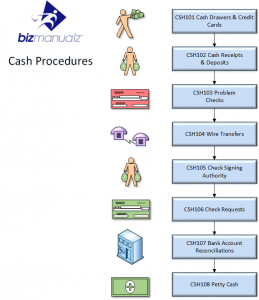
Four-week periods, on the other hand, are always 28 days with four Fridays and four Saturdays. When you’re comparing accounting periods, you want to accurately compare revenue based on times that should be equally as busy. Cost of goods sold is a KPI that indicates how well you’re pricing your products and controlling your inventory. CoGS represents the actual cost of food and beverage used to produce your food and beverage sales. By keeping tabs on your CoGS ratio, you can take action to reduce and contain your inventory costs. So here are the essentials of restaurant accounting and bookkeeping when it comes to reports, processes, and KPIs.
While long-term trend analysis is important, you should also log revenue reports on the daily and weekly. You can also use your revenue reports to show you how to set realistic sales targets and evaluate operations. Revenue reports display total expected revenue for a period and how the revenue is split between food and drink. Because of this, they require specific accounting methods and benchmarks that wouldn’t apply to, say, a retail store.
- It’s a good idea to set up an inventory management system that reduces waste and optimizes food cost.
- Evangeline mapped her Square online sales to hit one clearing account, and directed the cash to another one to keep track of them separately.
- It can show you an overview of your key financial reports, such as your balance sheet, cash flow report, and profit and loss statement.
- Prime cost is determined by adding labor costs to the cost of goods sold.
- Reconciling QuickBooks accounts is the single most important piece of the entire bookkeeping process.
To calculate overhead rates, the total fixed costs are divided by total operating hours. Calculating food costs will indicate whether you are making a profit from each item on the menu. To calculate food costs, the preparation cost of each item is divided by the revenue from each item. Calculating prime costs will help you boost profit, increase efficiency, and cut costs. Prime cost is determined by adding labor costs to the cost of goods sold.
They ensure that the figures are accurate, track inventory, and meet tax obligations. The overall goal with bookkeeping is to minimize operating expenses and maximize profits. As a restaurant owner, you spend your days dealing with inventory management, staffing, and controlling the cost of goods sold. An expert accountant frees you of the burden of complex financial analysis and monotonous daily tasks that would distract your focus from managing restaurant operations.
Food Cost Accounting
The chart of accounts includes assets, liabilities, revenue, expenses, and owner’s equity. This chart can be broken down into subcategories that specifically tailor to your business. That way, each category can easily be monitored and compared to industry averages. Restaurant bookkeeping can quickly become too complex for restaurant owners to handle. If you are not confident in your ability or lack the time that’s needed for accurate and thorough bookkeeping, consider hiring an accountant.
It’s common for staff members to have multiple wages and positions, so the ability to adjust for different rates is critical. Setting up a chart of accounts will give you a sense of the financial health of your restaurant so you know exactly where your money is coming from and how you can spend it. It also may be requested by investors and shareholders to prove your financial standing. Restaurant accountants are trained to compile data precisely and purposefully. They can analyze your financials and identify operational flaws, unnecessary spending, and trends to pay attention to long-term.
How To Master Restaurant Bookkeeping in Five Steps
The result is either cash over or short – but in an ideal world, you’re at zero. Modern POS systems can automate this process and generate daily sales reports that provide real-time data. Managing your finances can be one of the hardest parts of running a restaurant and also the deciding factor between success and failure. If you’re new to bookkeeping for a small business restaurant, this overview will help you understand common financial tasks such as handling payroll and paying quarterly taxes.

“Earnings before interest, taxes, depreciation and amortization” is used by restaurateurs, investors, and financiers as a proxy for cash flow. EBITDA represents earnings that are a result of operations only, while stripping away the effects of financing, accounting, and capital spending on your restaurant’s earnings. Your balance sheet also shows your equity, so your net worth; it’s what’s Restaurant bookkeeping left over at the end of the day when assets are subtracted from liabilities. This could mean reducing operating costs or finding ways to generate more income to cover debts. You and your accountant will work on certain bookkeeping and accounting tasks together. You’ll also want to know enough about accounting to monitor financial KPIs that will help you make business decisions on the fly.
To better understand restaurant bookkeeping, read these restaurant account tips and suggestions, and get on the way to being as successful as you imagined. A business strategy, organization, and the willpower to keep accurate accounting records are essential factors in determining whether or not your restaurant will get off the ground. Restaurant bookkeeping is one of the most important aspects of running a restaurant. Whether you’re running a small cafe or an upscale restaurant, you need a POS system for order management, back office-reporting, cash management, inventory management, and sending receipts. Select a POS system that is user-friendly for employees and customers and that integrates with your accounting software.
Cash flow statement
That’s why we created Hone, the perfect mix of bookkeeping service and software that combines decades of experience running successful restaurants with the latest in financial technology. In his 30 years in the industry, Brandon has run multiple restaurants, a seafood company and tortilla factory, as well as designed commercial kitchens. His time in operations for a restaurant group in Boston fueled his passion for making restaurants and businesses more profitable. Brandon sees Hone as his opportunity to use his experiences to help restaurants succeed not only financially but holistically. And since labor costs are one of the largest expenses for a restaurant, it’s important to know what it is so you can invest money wisely and increase profits.
Your income statement is concerned only with money coming into your restaurant. You may have operating income, which comes from your regular business activities such as dine-in meals and catering, and non-operating income, which comes from sources such as investments. You—or your manager or supervisor on duty—should correct time cards, note shortages on deliveries, and audit server receipts during every single shift. This is considered employee income rather than wages and isn’t included in a restaurant’s revenue.
Inventory turnover for most restaurants should be very high because you’re keeping the food fresh. “The food is normally purchased on a weekly basis and many times more than once per week depending on the types of food being sold in the restaurant. Most restaurants would have an inventory turnover of times for food and times for beverages,” he said.
Simplify the Complexities of Payroll Processing
It also shows how well the business is being managed on a daily basis. If a restaurant is run well, prime costs should stay around 60% to 65% of sales. With proper financial reports, restaurant owners can have a clear picture of whether they are in red or black.
Record your sales entries thorough your point of sales (POS) each day (not monthly or weekly). Using this method allows you to mimic how the cash and credit card deposits hits your bank account on a daily basis. Most restaurant POS systems accept credit cards and settle the batch per day. This will result in a credit card deposit or deposits hitting your bank account separately for each batch.
Restaurant Bookkeeping Tips for Your Business
Restaurant accountants understand how to compile data accurately and meaningfully. They are trained to analyze your financials to identify operational shortcomings, cost leaks, and trends that require immediate or long-term action. While daunting, learning what you need to know about restaurant accounting is not insurmountable.
You need to pull reports often and check them for accuracy and areas of improvement. Your passion for your restaurant may drive you, but ultimately your business won’t survive if you don’t have a firm handle on your finances. Be sure you’re aware of sales vs. cost of goods sold and that you’re also factoring in labor costs. Also be sure to analyze food costs and aim to keep them at around 60% of total sales. It’s one of the biggest pain points for restaurant owners, and perhaps one of the most often overlooked.
It takes data from your POS and can automate your sales tax in as little as five minutes. It doesn’t include payroll services or some of the features available in other accounting software, so you may want to use it in addition to one of the other software options. Accounting software is used by businesses to track income and expenses. Restaurants use it to do many of the same things, but it can also help track inventory, create invoices, calculate sales tax, price recipes and menus, and integrate with point of sales (POS) systems.
With everything in one place, Hone makes it easy to pay your bills, track your expenses, and make the best decisions for your restaurant. Hone turns chaos into cash, allowing you to put your time and attention on the parts of the restaurant business that you love most. Running the front and back of house in a restaurant is more than a full-time job, and the pressure to keep up financially can be overwhelming. Hone helps you better manage your books, so you can increase profitability and operational efficiency at your restaurant. From your POS to your accounting software and more, our team does the heavy lifting of connecting all of your systems. Restaurant bookkeeping and more—all for less than the price of most outsourced bookkeepers with month-to-month agreements and no hidden costs.
We can even recommend some restaurant management books and teach you how to do a swot analysis for restaurant to help you get the most out of your business. The vast majority of the business world use calendar months—or some derivation like quarters—for accounting periods. Bars and restaurants typically use four-week accounting periods, though. Learning how to manage restaurant accounts is all about becoming familiar with two accounting methods.
We’re big fans of RASI here at Orderly… they’re a restaurant accounting firm that combines the expertise of professional accountants with cutting-edge technology. If you need accounting help… we definitely recommend the experts at Restaurant Accounting Services, Inc. Instead of just seeing scary-high prime costs or deceiving sales numbers on their own. The other fixed costs (occupancy expenses and operational expenses) aren’t as easy to cut back on, and they usually make up a smaller portion of your overall expenses anyway. Prime cost is an important accounting term to know as a restaurant owner. Restaurants are the only type of small business that has occupancy expenses as a category on their income statements.
